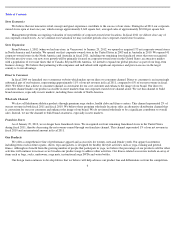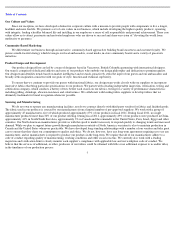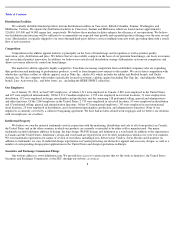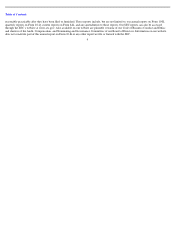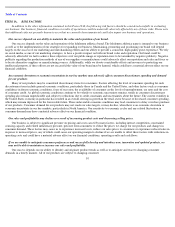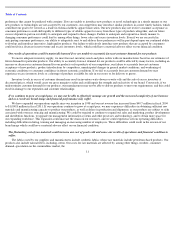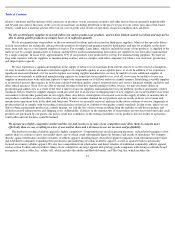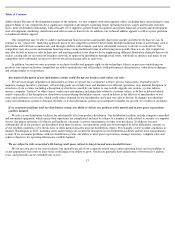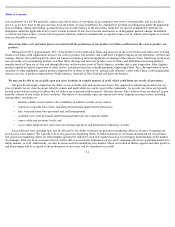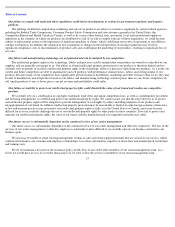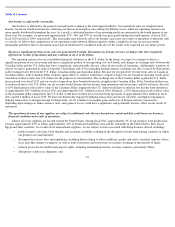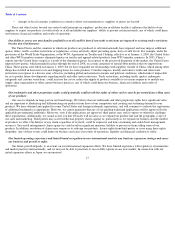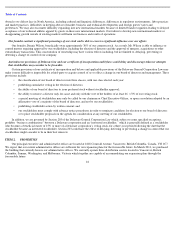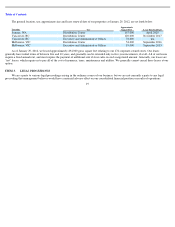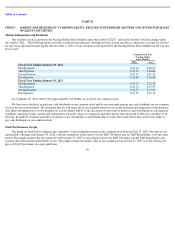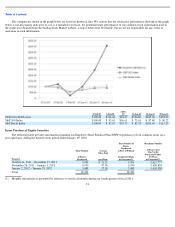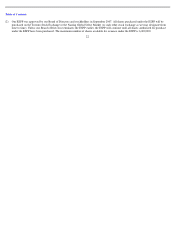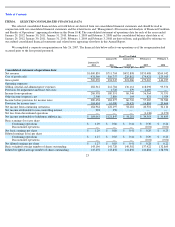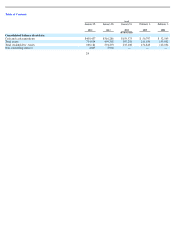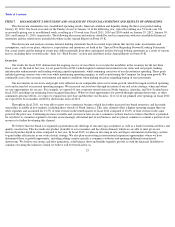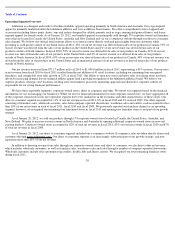Lululemon 2011 Annual Report Download - page 19
Download and view the complete annual report
Please find page 19 of the 2011 Lululemon annual report below. You can navigate through the pages in the report by either clicking on the pages listed below, or by using the keyword search tool below to find specific information within the annual report.
Table of Contents
Our business is affected by seasonality.
Our business is affected by the general seasonal trends common to the retail apparel industry. Our annual net sales are weighted more
heavily toward our fourth fiscal quarter, reflecting our historical strength in sales during the holiday season, while our operating expenses are
more equally distributed throughout the year. As a result, a substantial portion of our operating profits are generated in the fourth quarter of our
fiscal year. For example, we generated approximately 37%, 36% and 39% of our full year gross profit during the fourth quarters of fiscal 2011,
fiscal 2010 and fiscal 2009, respectively. This seasonality may adversely affect our business and cause our results of operations to fluctuate, and,
as a result, we believe that comparisons of our operating results between different quarters within a single fiscal year are not necessarily
meaningful and that results of operations in any period should not be considered indicative of the results to be expected for any future period.
Because a significant portion of our sales are generated in Canada, fluctuations in foreign currency exchange rates have negatively
affected our results of operations and may continue to do so in the future.
The reporting currency for our consolidated financial statements is the U.S. dollar. In the future, we expect to continue to derive a
significant portion of our net revenue and incur a significant portion of our operating costs in Canada, and changes in exchange rates between the
Canadian dollar and the U.S. dollar may have a significant, and potentially adverse, effect on our results of operations. Additionally, a portion of
our net revenue is generated in each of Australia. Our primary risk of loss regarding foreign currency exchange rate risk is caused by fluctuations
in the exchange rates between the U.S. dollar, Canadian dollar and Australian dollar. Because we recognize net revenue from sales in Canada in
Canadian dollars, if the Canadian dollar weakens against the U.S. dollar it would have a negative impact on our Canadian operating results upon
translation of those results into U.S. dollars for the purposes of consolidation. The exchange rate of the Canadian dollar against the U.S. dollar
has increased over fiscal 2011 and our results of operations have benefited from the strength in the Canadian dollar. If the Canadian dollar were
to weaken relative to the U.S. dollar, our net revenue would decline and our income from operations and net income could be adversely affected.
A 10% depreciation in the relative value of the Canadian dollar compared to the U.S. dollar would have resulted in lost income from operations
of approximately $15.4 million in fiscal 2011 and approximately $11.3 million in fiscal 2010. Similarly, a 10% depreciation in the relative value
of the Australian dollar compared to the U.S. dollar would have resulted in lost income from operations of approximately $0.4 million in fiscal
2011 and $0.1 million in fiscal 2010. We have not historically engaged in hedging transactions and do not currently contemplate engaging in
hedging transactions to mitigate foreign exchange risks. As we continue to recognize gains and losses in foreign currency transactions,
depending upon changes in future currency rates, such gains or losses could have a significant, and potentially adverse, effect on our results of
operations.
The operations of many of our suppliers are subject to additional risks that are beyond our control and that could harm our business,
financial condition and results of operations.
Almost all of our suppliers are located outside the United States. During fiscal 2011, approximately 3% of our products were produced in
Canada, approximately 49% in China, approximately 41% in South and South East Asia and the remainder in the United States, Peru, Israel,
Egypt and other countries. As a result of our international suppliers, we are subject to risks associated with doing business abroad, including:
16
•
political unrest, terrorism, labor disputes and economic instability resulting in the disruption of trade from foreign countries in which
our products are manufactured;
•
the imposition of new laws and regulations, including those relating to labor conditions, quality and safety standards, imports, duties,
taxes and other charges on imports, as well as trade restrictions and restrictions on currency exchange or the transfer of funds;
•
reduced protection for intellectual property rights, including trademark protection, in some countries, particularly China;
•
disruptions or delays in shipments; and


